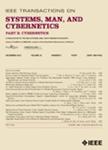版权所有:内蒙古大学图书馆 技术提供:维普资讯• 智图
内蒙古自治区呼和浩特市赛罕区大学西街235号 邮编: 010021

作者机构:Nanjing Univ Sci & Technol Sch Comp Sci & Engn Nanjing 21094 Peoples R China Nanjing Forestry Univ Sch Informat Sci & Technol Nanjing 210037 Peoples R China
出 版 物:《IEEE TRANSACTIONS ON CYBERNETICS》 (IEEE Trans. Cybern.)
年 卷 期:2020年第50卷第5期
页 面:2138-2151页
核心收录:
学科分类:0808[工学-电气工程] 08[工学] 0811[工学-控制科学与工程] 0812[工学-计算机科学与技术(可授工学、理学学位)]
基 金:National Key Research and Development Program of China [2016YFB1001001] National Natural Science Foundation of China [61522203, 61732007, 61603391, 61871444] Natural Science Foundation of Jiangsu Province [BK20171453] Qinglan Project of Jiangsu Province
主 题:Discriminative features l(1)-norm recursive algorithm subspace learning
摘 要:In feature learning tasks, one of the most enormous challenges is to generate an efficient discriminative subspace. In this paper, we propose a novel subspace learning method, named recursive discriminative subspace learning with an l(1)-norm distance constraint (RDSL). RDSL can robustly extract features from the contaminated images and learn a discriminative subspace. With the use of an inequation-based l(1)-norm distance metric constraint, the minimized l(1)-norm distance metric objective function with slack variables induces samples in the same class to cluster as close as possible, meanwhile samples from different classes can be separated from each other as far as possible. By utilizing l(1)-norm items in both the objective function and the constraint, RDSL can well handle the noisy data and outliers. In addition, the large margin formulation makes the proposed method insensitive to initializations. We describe two approaches to solve RDSL with a recursive strategy. Experimental results on six benchmark datasets, including the original data and the contaminated data, demonstrate that RDSL outperforms the state-of-the-art methods.